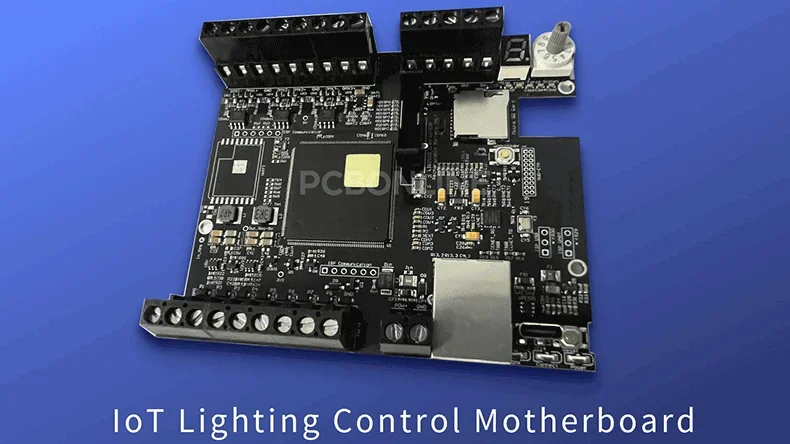
If you work in electronics design or manufacturing, you must have come across the acronym PCBA. What does PCBA stand for in electronics, and what does it involve?
PCBA stands for Printed Circuit Board Assembly, which refers to the process of mounting electronic components onto a bare PCB (Printed Circuit Board) to form a functional electronic circuit.
PCBONLINE is a turnkey PCBA manufacturer providing PCB manufacturing, SMT and THT assembly, PCBA testing, and box-build assembly. In this article, we'll explain what PCBA means in electronics, the difference between PCB and PCBA, the full PCBA manufacturing process, and PCBA inspection and testing methods.
What Does PCBA Stand for?
PCBA (Printed Circuit Board Assembly) is the process of assembling electronic components onto a bare PCB through automated surface-mount technology and half-automated through-hole soldering.
The PCB is a substrate circuit board made of fiberglass, epoxy, or PTFE/ceramic/aluminum/copper substrate materials with copper traces that connect circuit components electrically.
A PCBA includes the PCB and all mounted components, such as resistors, capacitors, ICs, connectors, transistors, and inductors.
Once assembled with all electronic components and wiring cables, the PCBA becomes a fully functional electronic circuit board. It is either ready to be integrated with other PCBA to form a module or system, or it is the functional mainboard. The module/system or the mainboard is ready to mount in a PCB enclosure, forming a product, such as a smartphone, LED driver, or industrial control.
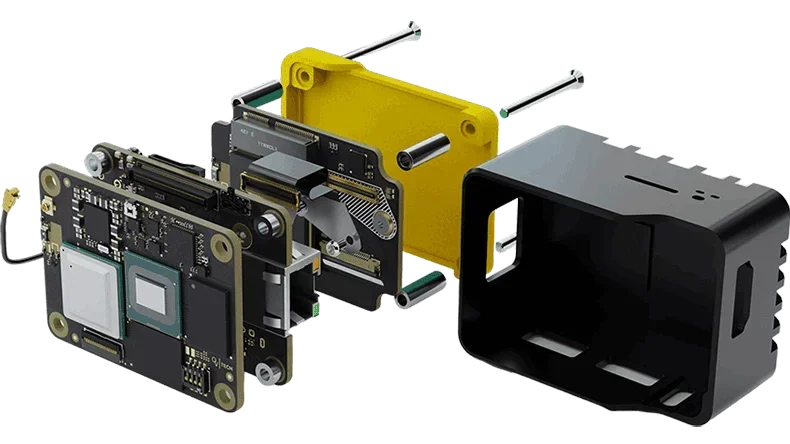
PCB vs. PCBA: What's the Difference?
Although PCB and PCBA are often used interchangeably, they refer to different stages in the electronics production process.
|
Term
|
Full form
|
Description
|
Stage
|
|
PCB
|
Printed Circuit Board
|
A bare circuit board made of insulating layers and copper circuits, with no components mounted
|
Before assembly
|
|
PCBA
|
Printed Circuit Board Assembly
|
A PCB that has all components (SMD, through-hole, or both) soldered onto it, forming a working circuit
|
After assembly
|
PCB + Components + Assembly Process = PCBA
A PCB is the foundation and can't function on its own. The PCBA is the functional electronic hardware of the electronic device.
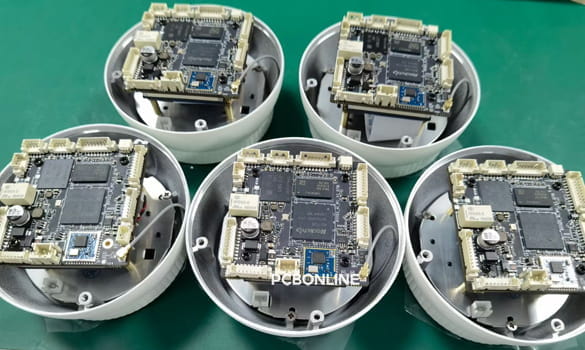
PCBA Manufacturing Technologies: SMT and THT
There are two main methods, including SMT and THT, for PCBA manufacturing, depending on the component types and design requirements.
SMT (Surface Mount Technology)
SMT is the most widely used PCB assembly technology in electronics manufacturing. Surface-mount devices (SMDs) are picked and placed and reflow soldered onto the PCB copper contacts/pads.
At PCBONLINE, our 4 SMT lines are fully automated. Each of our SMT lines includes dual-AOI inspections, three pick-and-place machines, and a 10-temperature-zone programmable reflow oven. The SMT process includes:
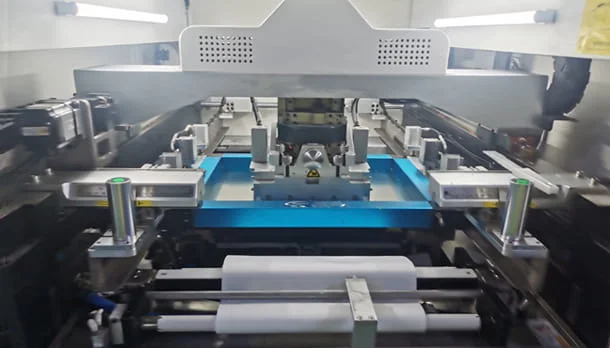
Solder paste printing – A stencil printer deposits solder paste on the component pads of the PCB.
Solder paste inspection (SPI) - An SPI machine scans the solder paste on the PCB to ensure its solderability.
Pick-and-place – Two high-speed PNP machines and one functional PNP machine position small-footprint SMDs and larger-footprint SMDs accurately on the solder paste.
Pre-reflow AOI - Before reflow soldering, a 3D AOI machine scans the components on the PCBA surface to prevent soldering risks.
Reflow soldering – The PCB passes through a reflow oven where solder paste melts and forms solid electrical joints.
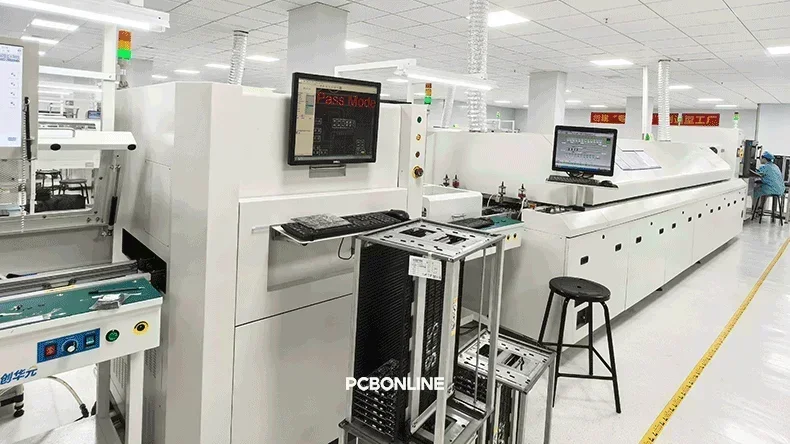
Post-reflow AOI - After reflow soldering, a 3D AOI machine scans the PCBA surface to ensure no surface soldering defects.
X-ray inspection - We have two X-ray inspection machines for checking the hidden joints of PCBA, such as BGA. It is not on the SMT line but after SMT assembly.
First-article inspection (FAI) - We have an FAI system after SMT assembly, which checks every component value to ensure its performance is qualified within the tolerance range.
Advantages of SMT:
- High component density and miniaturization
- High-speed automated production
- Better performance for high-frequency designs
- Lower overall production cost
Smartphones, laptops, and IoT devices rely heavily on SMT PCBA because of its compact and lightweight design capabilities.
THT (Through-Hole Technology)
THT (Through-Hole Technology) involves inserting component leads through drilled holes in the PCB and soldering them on the opposite side. The THT process includes:

Component insertion – Components are manually or automatically inserted into through-holes.
Wave or selective soldering – The entire board passes over molten solder (wave soldering) or individual joints are soldered selectively.
Lead trimming and visual inspection – Trim the THT component leads on the bottom PCBA side to be 1mm-2mm. Visually check wave soldering quality and component alignment.
Advantages of THT:
- Stronger mechanical bonding
- Suitable for high-power or heavy components like transformers and connectors
- Better durability in harsh environments
Automotive electronics, industrial control systems, and power supplies often use THT or a hybrid of SMT + THT.
Post-Assembly Services
After SMT and THT assembly, PCBONLINE can conduct complete post-assembly value-added services:
- In-circuit testing for short/open detection
- Functional circuit testing to verify operational performance
- Burn-In testing for thermal and electrical reliability
- Conformal coating to protect the PCBA from moisture, dust, and corrosion
- IC programming for transferring your program into the bare IC before delivery
- Box-build assembly to install the PCBA in the enclosure to become the final device
At PCBONLINE, we provide fully automated turnkey PCBA manufacturing services, handling every stage from fabrication to assembly and testing.
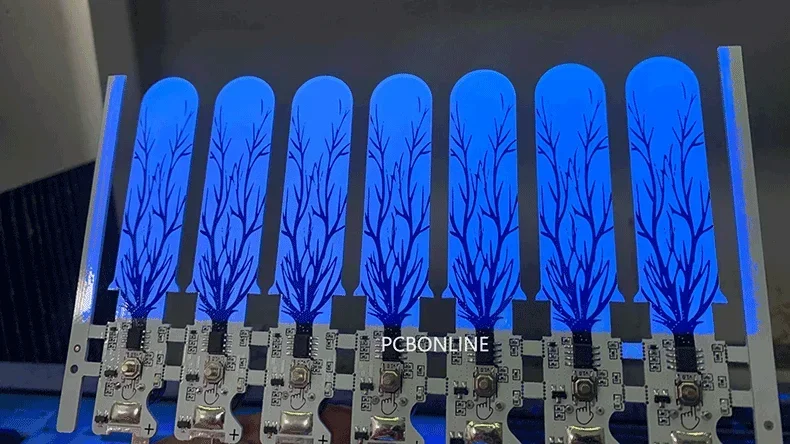
Applications of PCBA in Electronics
PCBA is used in almost every electronic product. The PCBA application fields include, but are not limited to:
|
Industry
|
PCBA applications
|
|
Industrial equipment
|
Motor drives, PLC controllers, sensors
|
|
Automotive
|
Engine control units, battery management systems, call connection systems, LED lighting, safety systems
|
|
Medical devices
|
Monitoring equipment, imaging systems, portable diagnostics
|
|
Aerospace and defense
|
Navigation systems, avionics, radar circuits
|
|
Telecommunication
|
5G base stations, routers, RF modules
|
|
IoT devices
|
Smart home controllers, wireless sensors, gateways
|
|
Consumer electronics
|
Smartphones, tablets, wearables, beauty light masks
|
All electronic sectors require PCBA solutions that match specific design tolerances, heat dissipation, and reliability standards. PCBONLINE provides one-stop PCBA manufacturing for all of them.
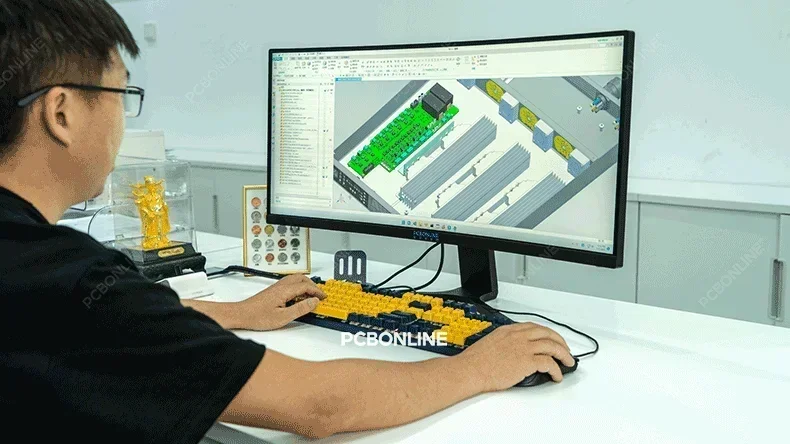
Partner with PCBONLINE for Turnkey PCBA
Since the foundation in 2005, PCBONLINE has been committed to turnkey OEM PCBA. We focus on PCBA manufacturing from prototypes to mass production. We can also provide box-build assembly to the PCBA, a module, and the final device.
Our turnkey OEM PCBA services offer:
- Turnkey PCBA manufacturing: From PCB ptototypes and testing to mass PCBA and box-build assembly, our PCB assembly services are custom and one-stop.
- Complete procurement: We source and customize enclosures, cables, and accessories from reliable suppliers.
- Engineering support: We check enclosure and accessory designs for compatibility with your PCBA and can suggest design changes.
- Free DFM/DFT: We provide free Design for Manufacturability (DFM) and Design for Testability (DFT) checks to ensure that designs are optimized for a smooth production process.
- Quality assurance: IPC-A-610 Class 2/3, automotive-grade or industrial-grade inspection standards.
- Turnkey delivery: From PCB fabrication to final product packaging and shipping.
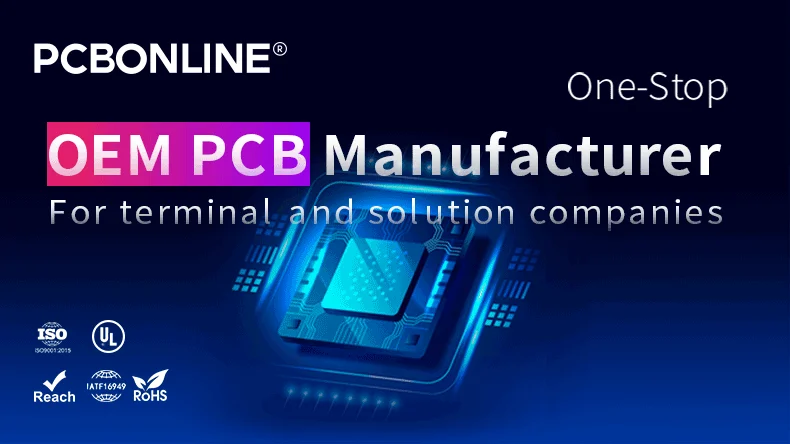
PCBONLINE manufactures, assembles, and tests PCBs and PCBAs to box builds as a source factory manufacturer under one roof, from prototypes to bulky production, saving costs and time for you.
We have powerful manufacturing strength for advanced PCBs and high-end assemblies, such as HDI PCBs, high-frequency PCBs, ceramic PCBs, waterproof sealing, and 01005 fine-pitch assembly.
We can precisely control reflow/wave oven temperatures, design PCBA fixtures, and help create user manuals, installation guides, and compliance labels.
Our high-quality PCBA contract manufacturing is certified with ISO 9001:2015, ISO 14001:2015, IATF 16949:2016, RoHS, REACH, UL, and IPC-A-610 Class 2/3.
Our one-on-one free and professional DFM helps you debug and improve design, to ensure the manufacturability, cost-effectiveness, and final device success.
Whether you need turnkey PCBA for server automatic transfer switches, AI hardware, IoT devices, medical-grade products, or automotive modules, we can deliver the PCBAs and modules of high quality and in time, meeting any of your project requirements. To get a quote for your PCBA or custom module project, email us at info@pcbonline.com.
Conclusion
PCBA stands for Printed Circuit Board Assembly, the process that transforms a bare circuit board into a functional electronic system. With more than 20 years of electronic manufacturing experience in turnkey OEM PCBA, we are ready to check your Gerber and provide turnkey services for your server ATS project. Contact PCBONLINE today!
PCB assembly at PCBONLINE.pdf




